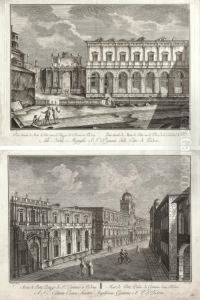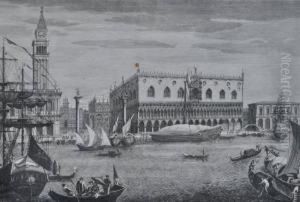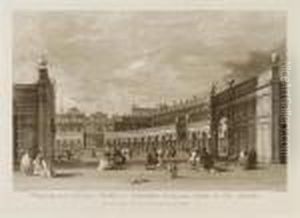Antonio Sandi Paintings
Antonio Sandi was an Italian engraver, painter, and architect, born in 1733 in Venice, Italy. He emerged as a significant figure in the Venetian art scene during the 18th century. Sandi's life and work were deeply intertwined with the cultural and artistic milieu of Venice, a city renowned for its unique landscape, architecture, and artistic heritage. His contributions to art and architecture reflected the broader trends of the time, including the Rococo movement and the early influences of Neoclassicism, which began to take hold towards the end of his career.
Sandi's artistic journey began with his training in the vibrant artistic environment of Venice, where he honed his skills in engraving and painting. He was particularly known for his detailed engravings, which captured the architectural beauty and the intricate details of Venice's urban landscape and its iconic buildings. These works not only showcased his exceptional skill as an engraver but also served as valuable records of Venice's architectural heritage during the 18th century.
In addition to his engravings, Sandi made notable contributions as an architect. His architectural works were characterized by the elegance and the intricate detailing typical of the Rococo style, which was predominant during the early part of his career. However, as Neoclassicism started to influence the artistic direction in Venice and across Europe, Sandi's later works reflected this shift. His ability to adapt to the changing artistic trends of his time demonstrated his versatility and deep understanding of the evolving aesthetic sensibilities.
Throughout his career, Antonio Sandi remained deeply connected to Venice, drawing inspiration from its rich cultural heritage and contributing significantly to its artistic legacy. His works continue to be appreciated for their beauty, craftsmanship, and historical value, offering insights into the architectural and artistic landscapes of 18th-century Venice. Sandi passed away in 1817, leaving behind a legacy that has cemented his place as an important figure in the history of Italian art and architecture.



